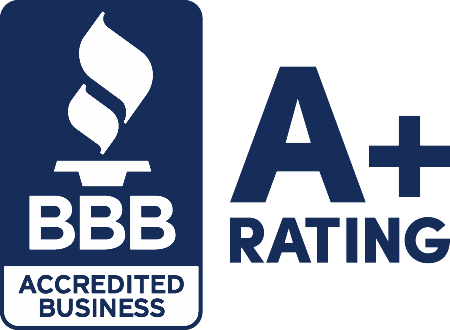What does Loss Payee mean in business financing?
In business financing, a loss payee designation, also called a standard loss payable provision, is an individual or entity that receives a loss payment in case of damage or loss to the insured property. When a lender is listed as a loss payee, they have the right to receive insurance proceeds before the borrower if a covered loss occurs.
Suppose you pledge property as security for a business loan. In that case, the lender will request that you obtain insurance to safeguard the pledged assets, including machinery, real estate, equipment, or other property. The lender may then request to be added to your property insurance policy with loss payee status.
Adding a lender with the loss payee designation to your policy indicates that the lender has a security interest in this property. Additionally, the loss payee endorsement safeguards the lender, who will be entitled to payment if the collateral sustains a loss that is protected.
What does Lender’s Loss Payable mean?
The lender’s loss payable provision is a critical protection for lenders when they have a financial interest in insured property. It ensures that lenders can still receive insurance proceeds if the borrower defaults on payments.
For instance, if a business uses equipment as collateral for a loan but fails to pay insurance premiums and the equipment is damaged, the lender can claim insurance to cover losses. This provision also applies if the borrower intentionally damages the collateral.
The lender’s loss payable status helps mitigate risks for lenders relying on collateral to secure loans, safeguarding their investments in unforeseen circumstances. Ultimately, it is a valuable tool for lenders to protect their financial interests and recover their funds in case of unexpected events.
What’s the difference between Lender’s Loss Payable vs Loss Payee?
Loss payee and loss payable provisions are commonly used in insurance policies, but have distinct meanings. A loss payee is a party named explicitly in an insurance policy as the one who will receive payment in case of a loss or damage to the insured property.
On the other hand, a loss payable clause designates a party, usually a lender or financial institution, as the one who will receive payment in case of a loss, typically related to a loan or financing agreement. The primary difference between a loss payee and a loss payable is who will receive the insurance payment in the event of a loss.
While a loss payee is typically the entity that owns the insured property, a loss payable is usually a third party with a financial interest in the property, such as a lender. Understanding these distinctions can help policyholders and stakeholders navigate insurance claims and financial agreements more effectively.
The lender receives notice from the insurance company regarding cancellation or non-renewal when named as the Lender’s Loss Payable. If the insurer denies a claim to the insured due to wrongful acts or non-compliance, the Loss Payee would not receive a payout.
What are Loss Payable Endorsements in Business Loans?
Loss payable endorsements in business loans refer to clauses that designate a specific party, typically a lender, as the recipient of insurance proceeds. These endorsements protect the lender’s financial interest in the collateral securing the loan, such as equipment or property.
Loss payable endorsements are common requirements in SBA loans to safeguard the lender’s interests. For example, if a borrower defaults on their loan, the lender can recover losses through insurance payouts. This ensures that lenders have a safety net in case of unforeseen circumstances.
When a business takes out an auto loan to purchase vehicles for its operations, the lender is listed as the loss payee on the insurance policy. If any damage occurs to the vehicles, the insurance company payout goes directly to the lender to cover the outstanding loan amount.
Loss payable endorsements provide lenders with added security when extending loans, reassuring them that their financial stake is protected. These clauses are crucial components of loan agreements, especially in high-risk lending scenarios.
How do I get a Lender’s Loss Payable or Loss Payable Endorsement?
You must include specific details in your insurance policy contract to obtain a Lender’s Loss Payable or Loss Payee Endorsement. This involves naming the lender as the loss payee on the policy.
When applying for these endorsements, provide accurate information about the lender, including their name and address. Ensure that this information matches precisely what is stated in your loan agreement.
To secure a Lender’s Loss Payable endorsement, you typically need to submit a copy of the loan agreement to your insurance provider. This document outlines the terms and conditions of the loan, including insurance requirements.
Your lender may have specific instructions on how to list them on the insurance policy. It’s crucial to follow these guidelines precisely to avoid any issues in case of a claim.
What are the pros & cons of adding a Loss Payee to Insurance?
Adding a loss payee to an insurance policy can benefit both parties involved. This provision ensures that the lender is notified if the policyholder fails to maintain insurance coverage, thereby protecting the lender’s financial interest. On the other hand, for the policyholder, including a loss payee can help secure loans or leases as it provides reassurance to the lender.
However, there are also some risks associated with adding a loss payee. One of the main drawbacks is that any insurance payouts will be made directly to the lender in the event of a claim, potentially leaving the policyholder without immediate access to the funds needed for repairs or replacements. Having a loss payee on an insurance policy may result in higher premiums for the policyholder, as the insurer perceives an increased level of risk.
Loss Payee Pros & Cons
Pros:
-
Provides additional protection for the lender in case of loss or damage to the insured property.
-
Ensures that the lender will be compensated first in case of a claim, reducing their financial risk
-
May result in lower insurance premiums for the borrower.
Cons:
-
Limits the borrower’s control over insurance claims and settlements.
-
It can complicate the claims process, as the lender may need to be involved in the decision-making process.
-
May lead to potential conflicts between the borrower and lender.
Frequently Asked Questions
Here are the most common questions about Lender’s Loss Payable vs Loss Payee.
Where should I look for Loss Payee & Lender’s Loss Payable?
Loss payee and lender’s loss payable designations are typically found in insurance documents and loan agreements.
Insurance Policies: When reviewing your insurance policy, check the section that specifies the payable status. This is where you will find information about loss payee and loss payable.
Loan Agreements: In loan agreements, especially those involving collateral such as vehicles or property, the lender often has the right to be listed as the loss payee.
Documentation: Always ensure the correct party is listed as the Loss Payee on all insurance documents. It’s crucial to point out any discrepancies in this regard.
Verification Process: Before finalizing any insurance agreements, double-check with your lender to confirm the accurate details of the Loss Payee and Loss Payable.
Why should businesses know about Loss Payee & Lender’s Loss Payable?
Knowing these terms is crucial for businesses dealing with loans and insurance. By being aware of these concepts, companies can safeguard their investments in machinery and equipment. In the event of an unfortunate occurrence, such as theft or damage, clearly understanding loss payees and the lender’s loss payable clauses can make a significant difference.
Understanding the roles of loss payees and lender’s loss payable can prevent financial losses due to unforeseen events. Businesses must ensure that proper notice is given to the carrier regarding these arrangements to avoid any complications in the event of wrongful acts or negligence.
What’s the difference Between a Loss Payee and a Lienholder?
The insured party typically designates a loss payee in an insurance policy. This designation grants the loss payee specific rights to any insurance payouts related to the insured property.
On the other hand, Lienholders are entities with a financial interest in the insured property. They are usually involved in the claim process to protect their financial stake.
One key distinction between a loss payee and a lienholder is their relationship with the insurance payout. While a loss payee directly receives insurance proceeds, a lienholder may need to work with the insured to access these funds.
Lender’s Loss Payable vs Loss Payee – Final Thoughts
Understanding the difference between a lender’s loss payable and a loss payee is crucial for both borrowers and lenders in insurance agreements. While a loss payable protects the lender’s interest in the collateral, a loss payee receives payment directly in case of a loss. Clear communication and documentation are vital to safeguard all parties in the event of unforeseen circumstances.
Contact us if you have more questions about these designations or to apply for a small business loan. Our alternative financing experts can help you find the best funding options for your business needs.
















